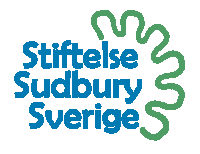Stiftelsen är i dagsläget vilande. Denna webplats är får att få
information om det vi kommer sträva efter så fort vi kommit
igång igen. Är du inspirerad av att hjälpa till på något sätt,
skicka gärna ett mail till info [@] sudbury.se
Att tillåta frihet
Insamlingsstiftelse för främjandet av Sudburyskolor i Sverige

The Charity works to increase awareness of the "Sudbury" school model, which was established more than 40 years ago in the USA at Sudbury Valley School. Today there are many more similar schools, not just in the US, but also in Japan, Germany, Denmark, Belgium, Israel and Holland.
The Charity also aims to influence politicians and others involved in the debate about schooling, so that at least one Sudbury school may operate here in Sweden.
A few of our short-term goals:
- to finance a research project that studies the approach and history of Sudbury schools abroad, and presents a report as to how the model might be adapted to work in Sweden;
- to translate into Swedish much of the written material on the model;
- to plan and finance some events with speakers from Sudbury schools abroad, and ensure these events are well and significantly - in terms of the Charity's aims - attended.
Registered charity number: 802426-6366
Bankgiro number: 726-7123
Registrered in Västra Götalands County.
If you want to get in touch, email info [@] sudbury.se
About the model
Sudbury Valley School was founded in 1968 in Massachusetts, by a small group of parents who were not satisfied with the options that were available when their kids were to start school. So they began to think and talk about what a school should actually be for, and took nothing for granted. The result was a school with a totally different set of values.
Since then the school has developed over time, and becom a sort of template for other parents and children who were not willing to accept "normal" school. It therefore became known as "the Sudbury Model".
The model is based on some simple principles. In our Memorandum and Articles we express them as follows:
- learning is seen as an inborn need, something that continues throughout life and adapts itself to continually changing circumstances;
- every individual has a unique mental and emotional constitution, which means that learning takes place at different rates and in differing ways for every person;
- to allow maximum freedom in conjunction with clear rules based on democratic values is considered necessary with a view to an environment where children may develop self-reliance and the ability for critical thinking, with understanding of the society they live in;
- students should have absolute freedom in regards to what and how they learn, and have the primary responsibility for their own learning;
- how students use their time is their own private choice and is considered a part of the development all individuals go through according to their own needs and circumstances;
- interest is the primary motivation for learning - students participate in requested lessons or activities irrespective of age group;
- today’s (and likely the future’s) multi-faceted society changes continually, and in a completely new way requires a learning that is steered from within;
- as members of a democratic society, students’ participation in the administration of their school (at every level) is their absolute right, irrespective of age.
What do these mean in practice? For example:
- the students themselves choose where, what, how and why any field is studied. If a student or group of students request teacher led instruction, the school’s staff arranges it;
- all decisions affecting school rules, stated breeches of the rules, demand for materials or resources and the appointing of staff are taken up at the school’s weekly meeting, where it is one person one vote, irrespective of age;
- all staff are expected to be positive and competent professionals. Their most important quality is that they respect the students and can communicate and cooperate with children of all ages;
- students determine together with the teacher when and to what extent the goal of the period of study is reached.
And what is the result of such an education, in reality? What hapens to kids who have been to a school like this? Is there any evidence that it actually works in practice? There is in fact a great deal of information and research, published by the school in books and articles over several decades. Here you can read a summary of statistics from one such publication.
Many of these thought provoking ideas challenge what we take for granted about schooling. Read more, contemplate more, look at the links and articles, and by all means send an email if you think you can contribute with something to help us achieve our aims.